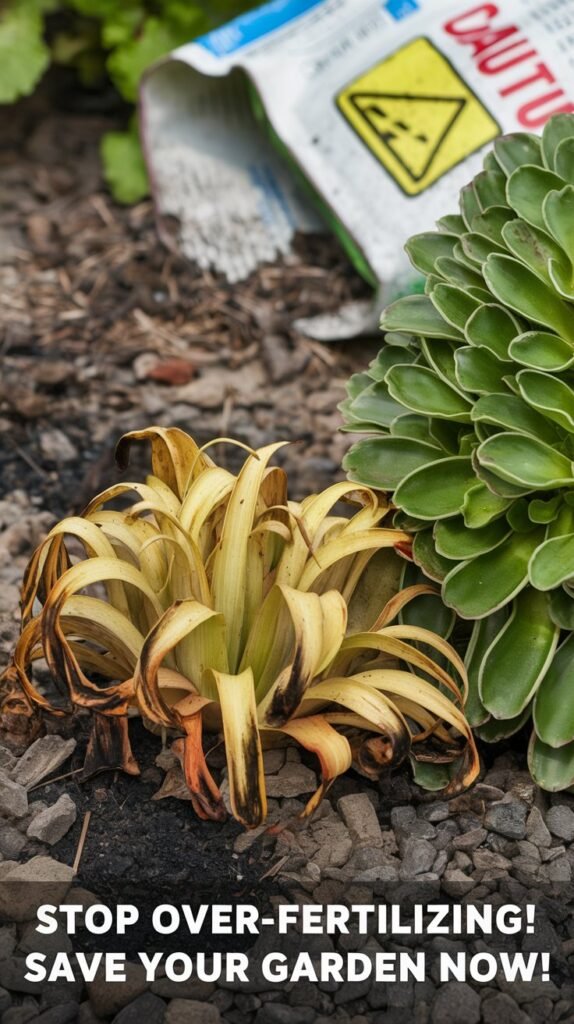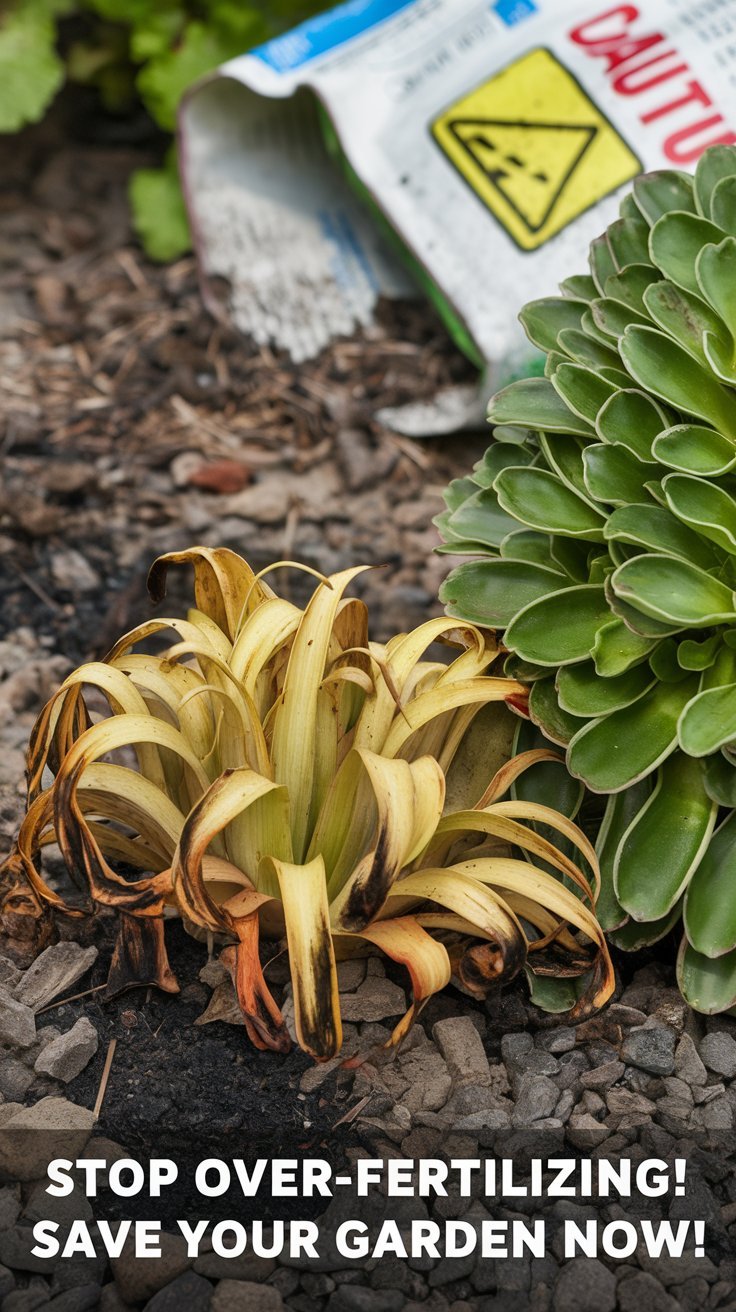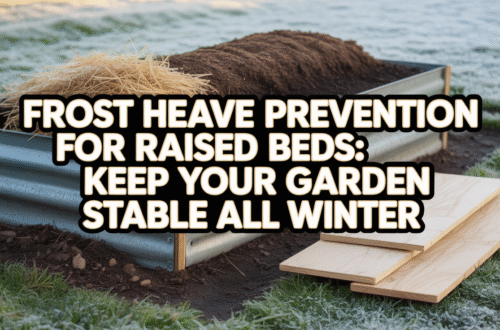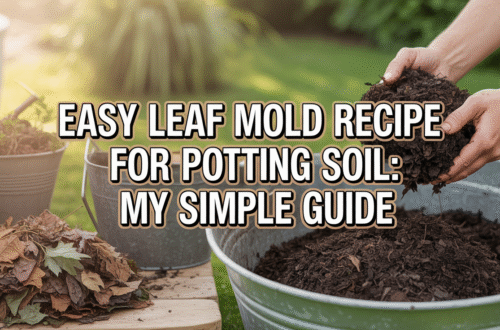Learn the signs of over-fertilized plants, how to treat fertilizer burn, and when to stop feeding your garden. Save your plants with expert tips from a seasoned gardener!
Hi, I’m Ashley Scott. With a decade of gardening experience under my belt, I’ve seen firsthand how too much love—in the form of fertilizer—can turn thriving plants into wilted casualties. Today, I’m sharing my hard-earned wisdom to help you avoid the pitfalls of over-fertilization and keep your garden healthy.
The Fertilizer Trap: Why More Isn’t Better
Fertilizing feels productive, right? You’re giving your plants a nutrient boost! But here’s the truth: plants can’t self-regulate nutrient intake. When you overdo it, salts in synthetic fertilizers accumulate in the soil, dehydrating roots and creating a toxic environment. Imagine chugging a gallon of protein shakes—your body can’t process it all. Plants feel the same overwhelm.
What Happens When You Over-Fertilize?
- Root Burn: Excess salts draw water out of roots, causing dehydration. Roots turn dark, limp, or crispy.
- Leaf Damage: Yellowing edges, brown tips, or scorched leaves signal nutrient overload.
- Stunted Growth: Too many nutrients disrupt photosynthesis, leaving plants weak and undersized.
- Polluted Ecosystems: Runoff contaminates waterways, fueling toxic algal blooms.
Spotting the Signs: Is Your Garden Over-Fertilized?
Last summer, my hydrangeas developed a mysterious white crust on their soil. Turns out, it was salt buildup from overfeeding! Here’s how to diagnose trouble:
6 Red Flags of Over-Fertilization
- White Crust on Soil: A salty residue signals excess fertilizer.
- Yellow or Brown Leaf Edges: Nutrient burn starts at the tips.
- Wilting Despite Watering: Salty soil prevents roots from absorbing moisture.
- Lush Leaves, No Blooms: Excess nitrogen fuels foliage at the expense of flowers.
- Sudden Leaf Drop: Stressed plants shed leaves to survive.
- Blackened Roots: Gently unpot a plant to check for root damage.

How to Treat Over-Fertilized Plants (Step-by-Step Rescue Plan)
When my tomato plants wilted after a fertilizer mishap, I followed these steps to revive them:
1. Stop Fertilizing Immediately
Halt all feeding to prevent further damage. Even organic fertilizers like compost can harm in excess.
2. Remove Visible Fertilizer
Scrape off crusty salt layers or scoop out undissolved granules from the soil surface.
3. Flush the Soil
- Potted Plants: Place them in a sink and pour room-temperature water through the soil 4–5 times. Ensure drainage holes aren’t clogged.
- Garden Beds: Soak the area with a hose for 30+ minutes to leach excess nutrients.
4. Prune Damaged Leaves
Trim brown or yellow leaves to redirect energy to healthy growth. Avoid removing more than ⅔ of foliage.
5. Repot or Replace Soil
For severe cases, repot plants in fresh soil. Outdoor gardens may need topsoil replacement.
6. Wait and Monitor
Hold off on fertilizing for 4–6 weeks. New growth is a sign of recovery!
Preventing Over-Fertilization: Smart Feeding Strategies
Avoid repeat disasters with these proactive tips:
1. Test Your Soil
I use a DIY soil test kit to check nutrient levels. Aim for a pH of 6.0–7.0 for most plants.
2. Follow the “Less Is More” Rule
Stick to package instructions. Liquid fertilizers should be diluted, and slow-release granules applied sparingly.
3. Time It Right
- Outdoor Gardens: Stop fertilizing 6–8 weeks before the first frost to prepare plants for dormancy.
- Indoor Plants: Reduce feeding in fall/winter when growth slows. Learn more in my guide on when to stop fertilizing houseplants.
4. Choose Organic Options
Compost, worm castings, or fish emulsion release nutrients slowly, minimizing burn risks.
5. Water Deeply After Feeding
This helps nutrients penetrate evenly instead of concentrating near roots.
When to Stop Fertilizing: Seasonal Guidelines
Timing is everything! Here’s my seasonal breakdown:
- Spring/Summer: Feed actively growing plants every 4–6 weeks.
- Fall: Stop outdoor feeding by late September (adjust for your USDA zone).
- Winter: Pause fertilizing most indoor plants unless they’re tropical and under grow lights.
FAQs: Your Over-Fertilization Questions Answered
Will over-fertilized plants recover?
Yes, if caught early! Flushing the soil and pruning damage can save most plants.
Why does too much fertilizer kill plants?
Excess salts dehydrate roots via reverse osmosis, pulling water out of plant cells.
Can organic fertilizers cause burn?
Yes, though it’s rarer. Overuse of manure or bone meal still risks nutrient imbalances.
Final Thoughts: Feed Smarter, Not Harder
Fertilizing is like seasoning food—a pinch enhances, but a pour ruins the dish. By tuning into your plants’ needs and adopting mindful practices, you’ll avoid the “too much of a good thing” trap. For more tips, explore my guide to organic fertilizers or check out these trusted resources:
- University of Maryland Extension: Soil Testing
- EPA Guide to Fertilizer Runoff
- Epic Gardening’s Fertilizer Burn Solutions
Remember, a thriving garden starts with balance. Happy growing! 🌱




